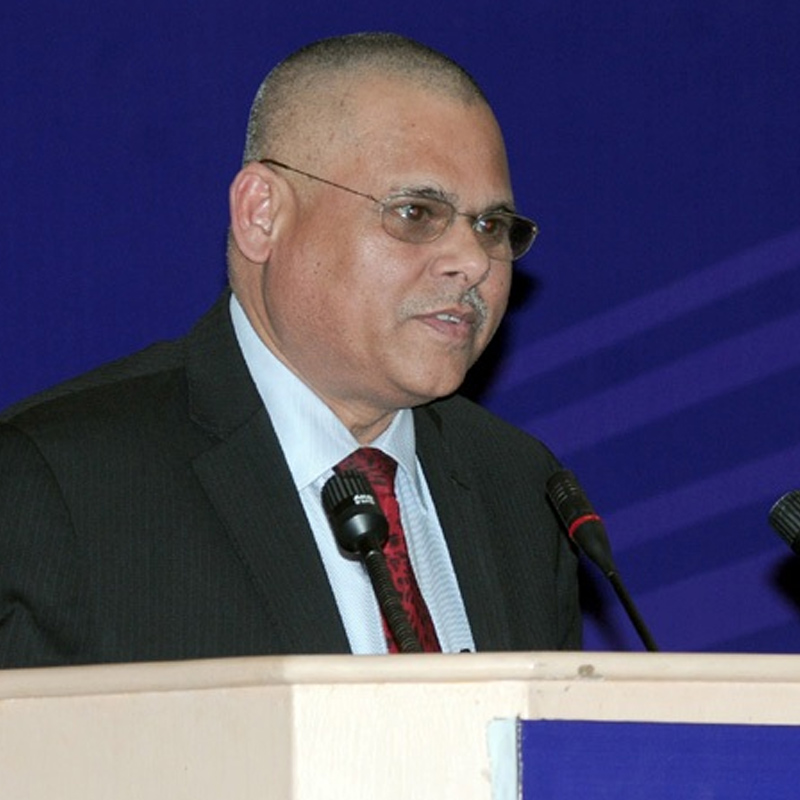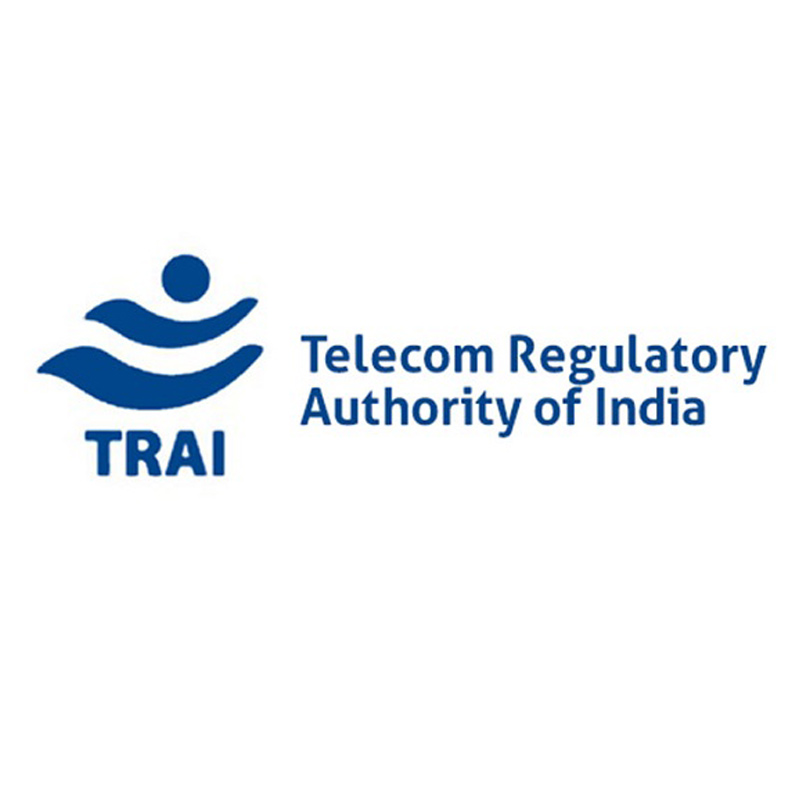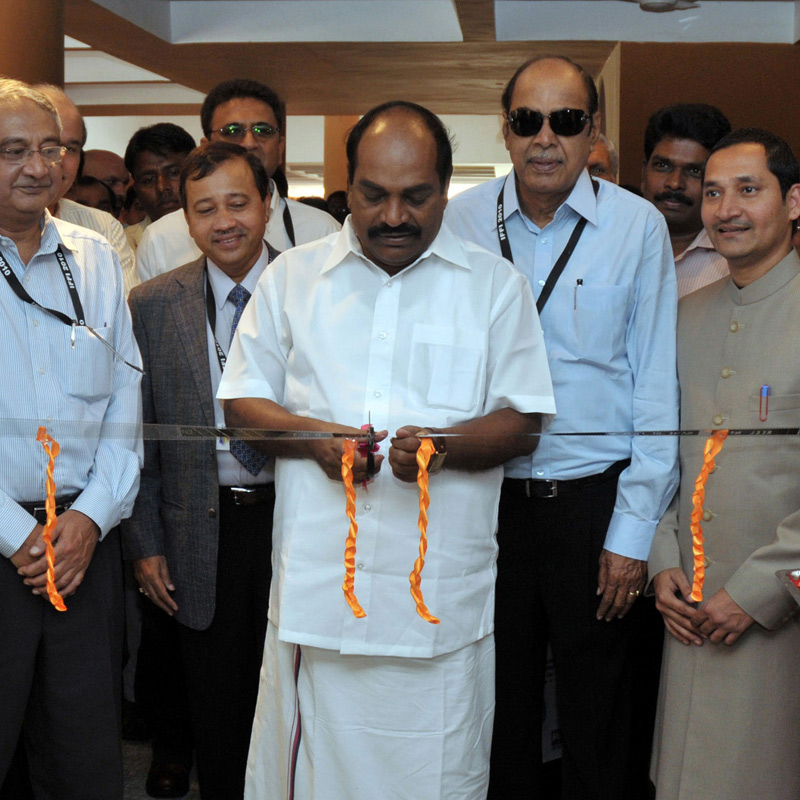Six films on 1971 liberation war in Bangladesh film fest
NEW DELHI: Six films based around the war for Bangladesh with Pakistan rule are to be screened in a special festival
NEW DELHI: The Information and Broadcasting Ministry will have wide-ranging consultations soon with the industry to fulfill its objective of turning India into a teleport hub for uplinking / downlinking satellite television channels so that there is no dependence on Hong Kong and Singapore.
The Ministry will work out modalities, challenges and road map for this purpose, I&B secretary Uday Kumar Varma said at the media and entertainment summit, ?The Big Picture?, organised by the Confederation of Indian Industry (CII).
and entertainment summit, ?The Big Picture?, organised by the Confederation of Indian Industry (CII).
Varma said India becoming a teleport hub could be instrumental in attracting accelerated flow of foreign direct investment (FDI) as also state-of-the-art technology and can help move up in the value chain in content generation.
The recent decision of the government to allow 74 per cent FDI in DTH, IPTV, and Mobile TV etc. are some of the steps that have been taken in this direction, he said, underscoring the fact that these steps would be game changers to make India a ?digitally happening place?.
Varma assured that the auction process for Phase III in FM Radio aimed at adding another 839 stations in over 290 towns and cities would commence by the end of the current financial year. Many positive steps would be taken in revamping All India Radio?s FM Radio to enhance its reach and content.
The empowered Group of Ministers is looking into some of the grey areas in the auction process. The government is also taking steps to restructure national broadcasting by enabling Prasar Bharati to recruit fresh talent and restructuring its financial flows.
Referring to the centenary of Indian cinema, Varma invited the doyens of the Indian film industry to join the tableaux to be presented at the Republic Day Parade 2013 in New Delhi on this subject, by walking down Rajpath on 26 January.
He also said the proposed National Film Heritage Mission (NFHM) had been set up with the objectives of undertaking frame-by-frame picture and sound restoration of more than 2500 films that are an important component of the Indian film industry. The Mission with a budget of Rs four billion would also look at constructing preservation vaults conforming to international standards for archiving the restored material and for conducting workshops and training.
Referring to the impact of piracy on the growth of the film industry, Varma said the government proposed to carry out an all-encompassing multi-media campaign during the 12th Plan period involving all stakeholders and film and music industries.
He also said the government would set up a Film Commission that would enable institution of a single window clearance system for shooting in India. He disclosed that in this regard his Ministry has signed an MOU with the Tourism Ministry to work towards promoting India as a global film shooting destination.
To give an impetus to an impetus to animation, gaming and VFX industry, the government would set up a Centre of Excellence that would produce technical professionals to cater to the need of high end human resources and IPR creation, under public?private partnership. The first such centre would come at Mohali near Chandigarh by the end of the financial year.
The Ministry is seriously considering using social media and may launch its own channel on the lines of You Tube.
The two-day meet is discussing various subjects over different sessions relating to media as a catalyst for social change, creating competitive business models, regulating sounds and images, and working to take the media and entertainment industry to the $100 billion mark.

NEW DELHI: In what can have major implications in the media industry with major companies following a vertically integrated model, the Information and Broadcasting Ministry has asked the Telecom Regulatory Authority of India (Trai) to examine afresh the issue of cross media ownership.
It is learnt that I&B Secretary Uday Kumar Varma sent the request to new Trai chairman Rahul Khullar on 16 May in this regard.
Ministry sources told indiantelevision.com that the need for review had been felt in the light of the recommendations of the Administrative Staff College of India, Hyderabad, which had been asked to study the issue by the Ministry. The three-member study headed by Dr Paramita Das Gupta with Dr Usha Ramachandran and Ashita Alamraju as members is understood to have pointed out some ramifications to national security and the possible results of concentration of the media in a few large companies.
In his letter, Varma pointed out that major players were looking for expanding their business interests in various segments of print and broadcasting sectors. "In this scenario, issue of media ownership and the need for cross media restrictions assumes great significance," he wrote.
Trai has been asked to look into both horizontal and vertical aspects of cross media ownership.
Varma has said companies have control and ownership across Print, TV and Radio leading to horizontal integration.
Though there is no restriction for a company to have ownership across Radio, TV and Print mediums at present, apprehension have been expressed in the past that control of media organisations in a few hands may prevent plurality of news and views, official sources said.
Varma has referred to other implications related to cross media ownership including ensuring quality services at reasonable prices.
The I&B secretary has also asked Trai to look into the issue of vertical cross ownership where companies owning TV channels were venturing into various distribution platforms like Cable TV distribution, Direct to Home (DTH) and Internet Protocol Television (IPTV).

NEW DELHI: Seeking better utilisation of radio frequency spectrum, the Telecom Regulatory Authority of India has recommended that the frequencies for FM radio channels within a licence service area should be released with a minimum spacing of 400 KHz from the current 800 KHz.
Several private FM radio operators feel that the cutting of frequency spacing would lead to a deterioration in the quality of reception and impact the proper enjoyment of content and programmes.
In its recommendation to the Information and Broadcasting Ministry, Trai said the FM channels operating with a channels spacing of 400 KHz should be radiated from effectively co-located sites and transmitted with equal power.
The 43-page recommendations by the regulator follow a request from the Ministry in August last year. The Ministry had requested Trai to reconsider the issue of minimum channel spacing within a licence service area in the FM radio sector.
The regulator has also written a letter to I&B secretary Uday Kumar Varma in this regard.
It said the exact location of frequencies may be done taking into account the frequencies and power of the existing set-ups/already allocated frequencies in the adjacent licence service areas so that the criteria for frequency re-use are satisfied. All the future planning if frequencies and development of the infrastructure should be done accordingly.
The co-location of transmitters has already been recommended by Trai in its earlier recommendations pertaining to expansion of FM radio broadcasting through private participation.
The minimum channel spacing - the frequency separation between the adjacent channels? carrier frequencies - is an important parameter which determines faithful reception of individual at the licenser?s FM radio receiver set.
With the improvement in the quality of radio receivers, penetration of digital devices such as mobile sets among the masses and alternate designs of the FM radio transmitter set-ups, it is now technically feasible to transmit more FM radio channels with reduced channel spacing in a given licence service area.
This should ensure effective utilisation of scarce radio frequency spectrum, the regulator has said.
Earlier, Trai had asked for stakeholders? comments on the issue in which only Radio Mirch has supported the recommendation while all the other private FM operators had expressed concern citing cost escalation, devaluation of current radio business and negative impact on the quality of sound of current stations as reasons for not supporting the move.
Those who have not supported the proposal are FM arms of media houses like HT Media (Fever FM), TV Today Network (Oye FM), Next Media Works (Radio One) and Music Broadcast (Radio City).
Entertainment Networks India Ltd, which runs Radio Mirchi, said: ?The Trai?s recommendations on Phase III and minimum channel spacing of FM radio are progressive in nature and if they are accepted by the Government in spirit, it will mean rapid proliferation of private FM radio on a far larger scale than what we have seen in Phase II ? reaching out to the fringe populations of our country. In light of this, our submission is that the operating control of the private FM radio companies should vest with Indian companies and Indian citizens. Foreign controlling ownership, i.e. equal or greater than 25 per cent would mean that editorial and content control no longer rests with Indian citizens.?
However, Radio One believes the reduction should not be done in A and A+ towns as these are towns where all the existing players have paid the maximum licence fee. ?These are also the most crowded FM markets with challenges even at 800 kHz separation. It should be considered only if existing players are allowed 15 years co terminus licence with new players and government is willing to bear the cost of the shift to lower channel spacing,? it stated.
Radio One also said that if the channel spacing is done without the co terminus for existing players, there is no level playing field and ?existing players will be forced to take legal recourse?. It warned that Phase III would get delayed as channel spacing is an issue which will take long time to resolve technically.
Meanwhile, Radio City said that the decision of reducing the channel spacing would not only be ?detrimental towards the interest of the existing broadcasters, but more importantly to the general public.?
It also said that there would be a substantial modification and investment required in the existing infrastructure. ?The private FM radio broadcasters will have to invest to the tune of Rs 100 million for each city to make the said reduction in frequency technically possible. Such investment would simply make the transition to Phase III unviable for a lot of the existing and new broadcasters,? it said.

NEW DELHI: Minister of State for Information and Broadcasting S Jagathrakshakan said today that community radio stations had empowered the masses and gave them a sense of belonging by effectively facilitating the growth of peoples? empowerment in the far and remote corners of the country.
He said CRS had bridged the digital divide as the aim was to connect the aspirations of the people to the information highway. CRS provides a platform to people to create their individual and collective identities.
He was speaking at the inauguration of the Second National Community Radio Sammelan, which commenced today with the objective of carving out a new roadmap for mainstreaming community radio as an effective outreach tool for community empowerment.
The three day event, organised by the I&B Ministry in association with Commonwealth Educational Media centre for Asia (CEMCA), also saw the presentation of the first National CRS awards.
I&B Secretary Uday Kumar Varma outlined the roadmap for the growth of the community radio movement in the 12th Five Year plan. It was necessary to target the uncovered areas in the country with a cost effective and operational business model, he said.
The Secretary called upon the participants to avoid delays in operationalising the licences in view of the scarcity and squatting over spectrum. For the movement to reach a sizeable target it was critical to be innovative, encourage out of the box thinking and learn from the best practices. A critical factor determining the growth of the movement was the need to focus on cost effective technology and research.
Varma said the Ministry had submitted a proposal to the planning Commission regarding state funding in the next five year plan. For being an effective dissemination tool it was necessary to position the relevance of the medium in disaster management.
The awards were given in five categories: Thematic, Community Engagement, Promoting Local Culture, Most Creative/Innovative Programme Content, and Sustainability Model Award.
The Ministry has so far issued 363 permissions to set up Community Radio Stations in the country. Out of this, 126 stations have become operational while others are in the pipeline.
The Sammelan has brought together more than 150 stakeholders including Community Radio operators, UN partners, activists, Government departments and experts from various countries like USA, UK, Australia and South Africa.
In the last two years, Ministry has taken several initiatives to strengthen the community radio movement in India. Permission process for the CR applications has been fast tracked through better coordination with stakeholder Ministries. People can also now apply online and track the status of their applications at www.cronlineindia.net. This has brought about transparency and accountability in the system. A Facilitation Centre has also been opened up in the Ministry with a toll-free phone number where people can call up for any information relating to community radio. Due to these initiatives the number of permissions issued by the Ministry for setting up community radio stations has increased from 186 to 363 and number of operational CRS has increased from 64 to 126 in the last two years.
The Ministry has been organising awareness and capacity building Workshops all over the country from 2007 onwards to create awareness about Community Radio Policy. Around 32 Workshops have been organised so far. These Workshops have proved to be useful not only to spread awareness but also build capacities of the NGOs and other organizations to operate Community Radio Stations in an effective manner.
The Ministry has partnered with Ek Duniya Anek Aaawaz (EDAA) which is an audio content exchange platform for community radio stations, to have a separate micro-site on EDAA for the coverage of the 2nd National Community Radio Sammelan on new media platforms.
EDAA is a web based open content exchange platform for community radio broadcasters. The platform enables the CR stations and other content producers to share their audio content and other resources, thus facilitating meaningful utilisation of resources breaking geographical boundaries. This site is operated by OneWorld Asia, an NGO.

NEW DELHI: Jawhar Sircar, until now secretary in the culture ministry, is to be the new chief executive officer of Prasar Bharati.
Sircar?s name was cleared after a three-member selection panel headed by Vice-President Hamid Ansari with Press Council of India chairman Justice Markanday Katju and Information and Broadcasting secretary Uday Kumar Varma as members recommended his name for the position. The appointment of the CEO is done by the President on the recommendation of the selection panel.
Indiantelevision.com had earlier reported that Sircar was tipped to be the CEO.
Sircar is due to retire from his present job next month, and will take over from acting CEO Rajiv Takru, the Additional Secretary in I&B ministry and its representative on the Prasar Bharati board.
Takru had been asked to hold additional charge of CEO in January last year after the suspension of then CEO B S Lalli, following a series of corruption charges established by the Central Vigilance Commission.
However, the search for a successor could begin only after Lalli retired in December. It is learnt that a panel of 11 members was sent to the three-member committee.
Sircar belongs to the 1975 batch of Indian Administrative Service from West Bengal. After the retirement of I&B secretary Raghu Menon in September last year, Sircar had been asked to hold additional charge of this ministry in addition to the culture ministry, until the appointment of Uday Kumar Varma.
Sircar holds two post-graduate degrees in Ancient Indian History and Culture and in Sociology with Social Anthropology. He has served as additional (later special secretary) secretary and development commissioner for micro, small and medium enterprises in the centre, prior to which he held the posts of higher education secretary and principal secretary of commerce and industries in West Bengal.
Sircar has been actively associated with several cultural and academic bodies like the Asiatic Society, the Victoria Memorial, the Centre for Archaeological Studies, the Kolkata Museum of Modern Art and the Indian Anthropological Society. He took the lead in establishing the annual Kolkata Film Festival as an international event. He has published several articles and research papers on history, culture and society. In the last decade, he has focussed his research on specific aspects of popular culture, folk religion and on the development of socio-religious identities.
?NAction was taken against Lalli after the Shunglu committee report indicted him for irregularities in the broadcast contract of the Commonwealth Games. A Central Bureau of Investigation probe is underway in this connection. Meanwhile, a Supreme Court has been asked to probe the four charges of corruption established by the CVC.
The five allegations established by Central Vigilance Commission relate to contracts for management of advertisement revenue arising from the telecast of cricket matches on Doordarshan during 2007; the non-telecast by Doordarshan of T-20 cricket World Cup matches held in South Africa in September 2007; engagement of legal entities to represent Prasar Bharati; purchase of radio broadcasting rights for 13 cricket series held during 2007-09; and hiring of transport and accommodation for the conduct of the Commonwealth Youth Games in Pune in 2008.
Also Read:
Hunt for new Prasar Bharati CEO begins as Lalli?s term ends

 switch
switch
 switch
switch